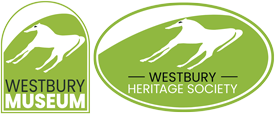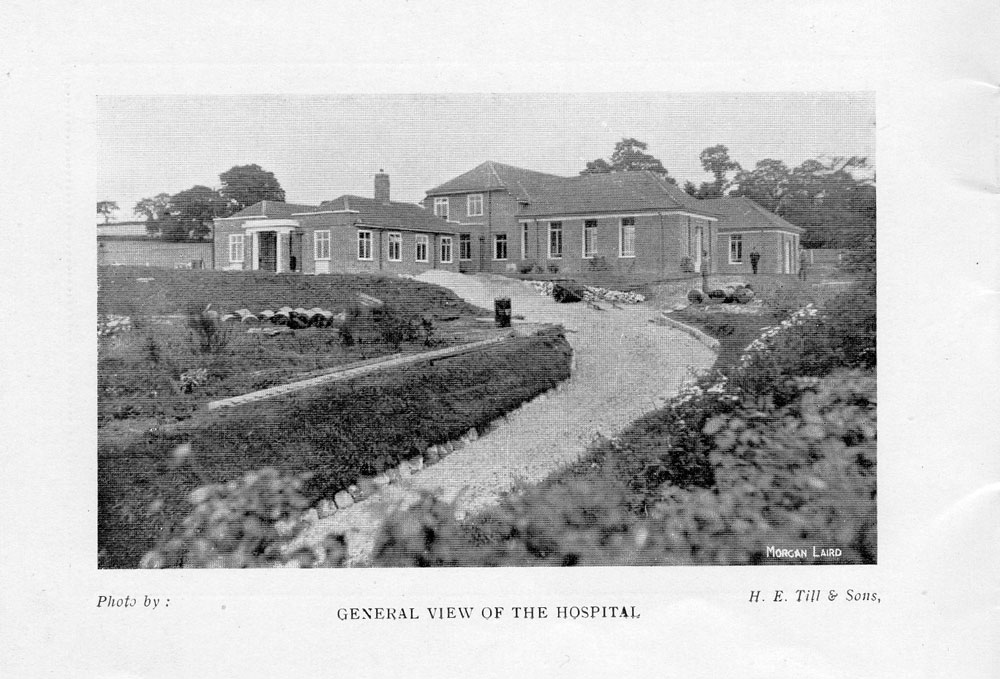Lost Buildings.
Over time towns change and develop and Westbury is no exception. Some buildings have survived for many years, Westbury still has more than 150 listed properties, while others have come and gone in living memory. This is a look at some of the houses, workplaces and other properties that are preserved only in pictures or on old maps.
Fontainville
For a century and a half two imposing residences stood in Edward Street. One, Westbury House, survives as the local library. The other, Fontainville, was demolished in the early 1960s. Built around 1816 it was home to several prominent families over the years. James Wilson, MP for Westbury and the founder of The Economist magazine lived there in the mid-nineteenth century and it was later occupied by the Jefferies family, owners of one of the town’s gloving companies. In 1907 James Fisher, manager at the New Westbury Iron Company was living there. During the Second World War it was used to accommodate soldiers, including Americans prior to D-Day. By the end of the war it was was a ruin and for many years it was believed that no images existed of how it used to look. In 2020 the Heritage Society became aware of an archive of photographs taken in and around Westbury in the early 1940s and it was thrilling to discover a couple of the house when it was still intact.
The Athenaeum
This stood in Bratton Road opposite the Laverton Institute on the site which is now a car park. It is another building that has not been fully preserved in pictures: only one corner being visible in a photo taken of the neighbouring Oddfellows Hall. It was built in the middle of the nineteenth century and would have been used for literary and scientific study. It also housed the boys’ British school until this transferred to the Laverton Institute in 1874. In later years it was used as a masonic hall.
The Oak Inn
The Hartshorn family were the landlords of this Warminster Road pub for about 70 years from the latter part of the nineteenth century. The building was demolished in 2012 to make way for the Aldi supermarket. A scissor-beam roof discovered during demolition showed it was much older that its outward appearance suggested. The timbers were dated to the late fifteenth and the first half of the sixteenth centuries. Smoke blackening on the beams indicates the building may have originally been a high status open hall, perhaps a clothier’s house.
Westbury Iron Works
The works behind the station opened to great fanfare in July 1858. At the height of its operation the night sky was lit up by a fiery glow from its four furnaces and it provided valuable employment for the town. By the start of the twentieth century the company was struggling and production declined until finally stopping in the early 1930s. Today the lakes, locally called mineholes, where the iron ore was mined, are its main legacy.
Wellhead Mill
If you go for a walk down Wellhead Lane you will pass the site of this former mill. A fulling mill may have been here in the early eighteenth century, although it was later a corn mill until its sale in 1802. It was then rebuilt as a cloth mill and sold to Matravers and Overbury in 1812. The new building was four storeys high and had a water wheel with a diameter of 16ft 6ins. Later additions were made, a steam engine was installed and by 1848 the mill had a iron wheel 25ft across. By 1884 the mill was closed and most of the buildings had gone. The only part to survive into the twentieth century was used as dog kennels by the Leighton House estate. Today some traces of brickwork remain along the stream and the mill pond is still visible in the woods just off the path.
Bere’s Mere Farm
At the end of Wellhead Lane is Wellhead Drove. Turning left here and heading towards Newtown will take you past the pumping station and the woods to a small copse of trees on the left. Until the 1970s the remains of Bere’s Mere farmhouse were visible amongst the young trees and an abandoned orchard next to it. The house was probably deserted sometime in the middle of the twentieth century and looking round there is no sign that there was an electricity supply to it. Over the years the remains of the house have disappeared and the fruit trees were removed to create a bigger neighbouring field, but the farm name and orchard are still shown on Ordnance Survey maps from the 1980s.
Town Farm and Pound Farm
The farmhouse for Town Farm was in Alfred Street next to the entrance to Bitham Mill. Just before the Second World War a new house was built on Bratton Road, just below the White Horse, and the farming family, the Sculls, moved out. The old house was demolished and the land used to build an extension to the mill.
Not far away on Bratton Road next to the school at the bottom of Newtown was the house and farmyard of Pound Farm. The Jones family had moved out by the early 1970s and when the buildings were demolished houses were built on the site.
Click on the images below for further information


